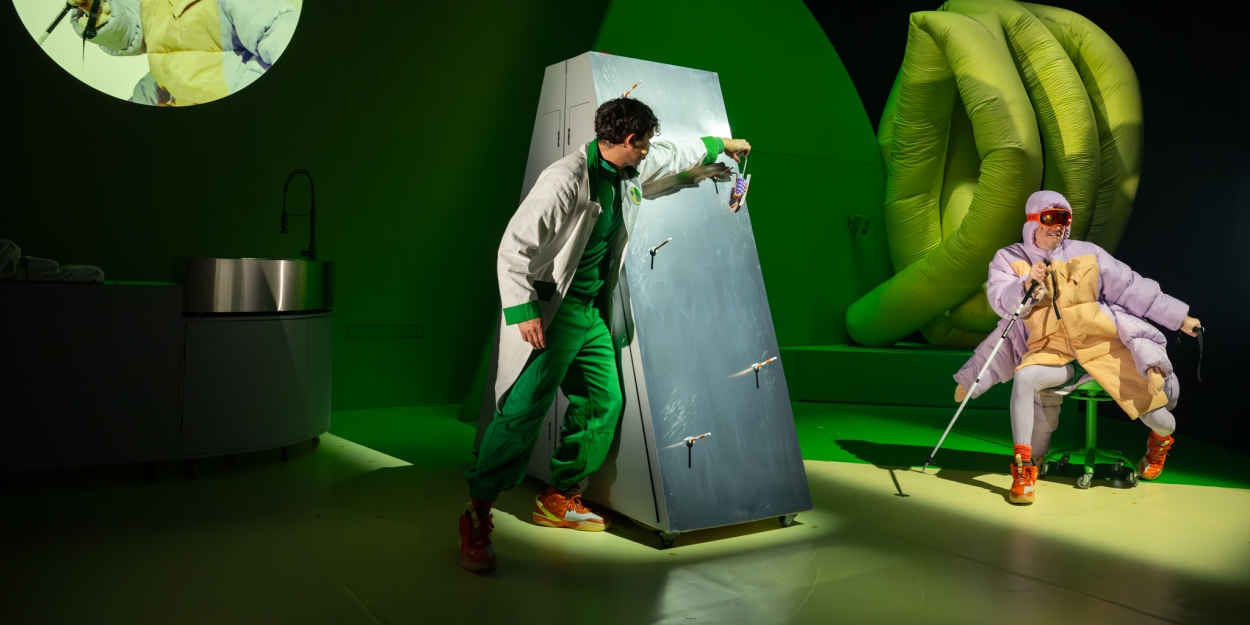Review: MOSS PIGLET at Space Theatre, Adelaide Festival Centre
Taking a look at a tiny world.

Reviewed by Ewart Shaw, Sunday 20th October 2024.
Windmill’s Moss Piglet is an astounding act of imagination, technology, puppetry and fun. Theatre for young people was never like this when I was young. This is blissfully silly, and maybe incidentally educational. Co-creators, Clare Watson and Elena Carapetis, have assembled a world-class team of creatives and unleashed them on the theatre. Forty or so minutes, kaleidoscopic and bewildering, make for an unforgettable event crammed with cleverness.
I attended the show as an unaccompanied adult. Henry is only two. It’s an interesting perspective, watching the audience of children and adults and their reactions, as well as the show itself. The young audience was mesmerised. The adults were spellbound.
There’s a prelude. The curtained-off Space foyer hosted several scientific setups, staffed by white-coated attendants encouraging you to look for tardigrades, reinforcing the educational philosophy of the show and reminding you that tardigrades are very, very small indeed.
The tardigrade, or water bear or, as the title goes, moss piglet, is an almost microscopic creature, with eight legs on a segmented body. Each leg has tiny claws or suction caps.
They are also amazingly resilient, surviving extremes of heat, cold, aridity, and depth of seas.
This ability provides the framework for the show as we are led through the many challenges that are provided by two scientists whose job appears to be testing the limits of the tardigrade.
Like all the best scientific documentaries, this comes complete with a calm and educated voiceover. The set has a lab bench with test tubes and paraphernalia. There is also a metal cupboard, which splits in half and wheels around. Magic things are hidden in there.
The two shuffling laboratory workers, Gareth Davies and Dylan Miller, take the tardigrade through the heat of the desert. They then phone the boss to say ‘Dead’ and then realise the tardigrade is ‘Alive’. We watch the animated moss piglet trekking through the sands of the Sahara. Luke Smiles’s soundtrack references the theme from Lawrence of Arabia, and also going through the desert ‘on a horse with no name’. The music of Maurice Jarre and Neil Young is speaking to the grown-ups.
The puppetry is superb. One of the white-coated lab workers nips out of sight and returns in an amazing tardigrade outfit, one of the various puppets of various sizes. Oh, yes, there’s the poo joke. Everybody loves a poo joke. The scene in outer space, as the tardigrade tries to eat while wearing the fishbowl headpiece, is unforgettable.
Composer Luke Smiles, speaking with me on 5EBI’s Arts on Air, described the show as “epic in scale, even though it’s a show for children. It’s like multiple film trailers all stuck together”, and it is. Each drama is signalled with dramatic intent and sweeping vistas. Secret agent, astronaut, or athlete, the tiny creature is heroic.
Smiles was also enthusiastic about the creation process, with every member of the team encouraged to throw in their thoughts and ideas. The end result is gloriously indulgent.
The wealth of imagination coupled with technical virtuosity that marks out this production is overwhelming, and the young audience just takes it for granted, as they should. The effects may resemble the smooth facility of a TV cartoon show, but real people are making it happen and that’s a huge part of the impact of the play. Whether they go on to be scientists, theatre makers, or just perceptive audiences, this production has shown them magic.
Whatever it cost to create and bring to the stage is irrelevant. Theatre for young people deserves work of this quality. Luke Smiles and I, talking about the show felt that it was rather like concealing nutritious vegetables from children by blending them invisibly into mashed potato. “Like broccoli?” “Like broccoli”.
Reader Reviews

Videos

